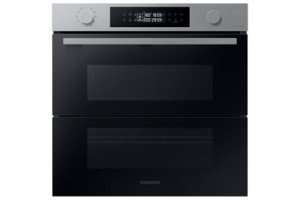The Three Greatest Moments In Integrated Oven Sizes History
Understanding Integrated Oven Sizes: A Comprehensive Guide
Integrated ovens have ended up being synonymous with modern-day cooking areas, offering smooth aesthetic appeals and efficient cooking options. As homeowners go for a smooth look in their cooking spaces, comprehending integrated oven sizes ends up being crucial for enhancing kitchen designs and making sure efficient cooking. This post digs into the numerous integrated oven sizes readily available in the market, their measurements, and how to pick the right one for your home.
What is an Integrated Oven?
An integrated oven is developed to be built into kitchen cabinetry, supplying a structured appearance that mixes effortlessly with the remainder of the kitchen. Unlike freestanding designs, integrated ovens can be concealed behind kitchen cabinetry doors or located at eye level, making them a popular option for contemporary kitchens.
Secret Features of Integrated Ovens
- Space-saving design: Optimizes kitchen location without compromising design.
- Adjustable finishes: Available in numerous colors and products to match kitchen decoration.
- Advanced innovation: Often equipped with modern-day features, including smart innovation, differing cooking modes, and energy-efficient operations.
Common Integrated Oven Sizes
When thinking about an integrated oven, the most important element to examine is its size. Integrated ovens are available in different dimensions, generally designed to fit standard kitchen cabinets. The following table lays out the most common integrated oven sizes:
Oven Type
Height (mm)
Width (mm)
Depth (mm)
Cooking Capacity (litres)
Single Built-In
590
595
550
60-70
Double Built-In
590
595
550
60 (each oven, total 120)
Compact Built-In
450
595
550
30-40
Combination Microwave
455
595
550
30-40
Wall Oven
720
600
550
70-90
Factors to consider When Choosing an Integrated Oven Size
When it comes to choosing the proper size for an integrated oven, there are a number of aspects to think about:
- Kitchen Layout: Evaluate your kitchen area and choose where the oven will be integrated into cabinets.
- Cooking Needs: Consider how frequently you cook and your cooking choices (e.g., baking, roasting).
- Readily available Space: Measure available cabinetry dimensions to make sure the oven fits comfortably.
- Capability Requirements: Assess the size of meals you usually prepare, particularly for households or when entertaining guests.
- Future-proofing: Think about including patterns such as clever innovation or flexibility in use.
Kinds Of Integrated Ovens
Integrated ovens are available in several types, each offering unique benefits:
- Conventional Ovens: Standard cooking functions, ideal for most cooking techniques like baking and roasting.
- Steam Ovens: Utilize steam for cooking, ideal for healthier dishes, retaining wetness and nutrients.
- Convection Ovens: Circulate hot air for even cooking, great for baking pastries and several dishes simultaneously.
- Microwave Ovens: Offer fast reheating or defrosting options and can be integrated with conventional ovens for adaptability.
Benefits of Integrated Ovens
Integrated ovens offer numerous advantages that can boost the cooking experience:
- Aesthetics: Offers a tidy design that fits seamlessly into any kitchen design.
- Space efficiency: Maximizes space by using built-in kitchen cabinetry.
- Ergonomics: Mounting ovens at eye level enhances convenience and safety when getting rid of hot meals.
- Increased functionality: Many integrated options come with functions such as self-cleaning and wise connection.
Frequently Asked Questions (FAQs)
1. What is the basic size for an integrated oven?
The most typical size for a single built-in oven is roughly 590mm in height, 595mm in width, and 550mm in depth.
2. Can I install an integrated oven in an existing kitchen?
Yes, as long as the existing kitchen cabinetry can accommodate the size and requirements of the selected oven, it can be integrated seamlessly.
3. Do integrated ovens have a larger capability than freestanding ones?
Normally, integrated ovens have a similar capability to freestanding designs; however, specific styles may vary. Always inspect the specifications for optimal space and capability.
4. Are integrated ovens more pricey than freestanding ovens?
Incorporating an oven can be more expensive due to setup and customization. However, rates vary based on brand and technology, so it's important to compare alternatives.
5. Is upkeep different for integrated ovens?
Maintenance for integrated ovens resembles that of freestanding models but may require more care with built-in kitchen cabinetry components. Routine cleansing and understanding the oven's features are vital for durability.
Picking the ideal integrated oven size is important for enhancing kitchen space and enhancing cooking experiences. By comprehending the various setups readily available and considering individual cooking requirements, property owners can perfectly integrate a modern-day oven into their kitchen areas. With a series of designs to suit varied aesthetics and performances, integrated ovens remain a popular option for modern cooking spaces. Whether Best built in oven and gas hob packages or building a new kitchen, picking an integrated oven tailored to your needs will guarantee years of satisfaction and culinary imagination.
